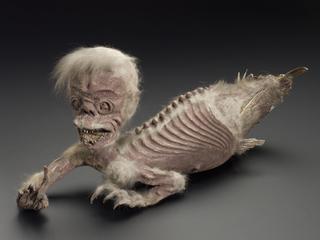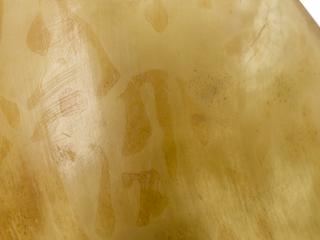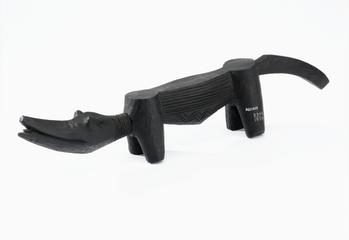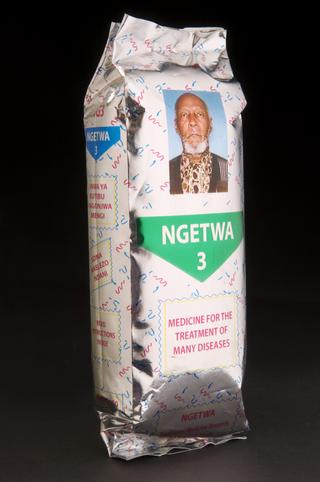
Leather container covered entirely with cowrie shells, Nigeria, 1850-1920
- maker:
- Yoruba people


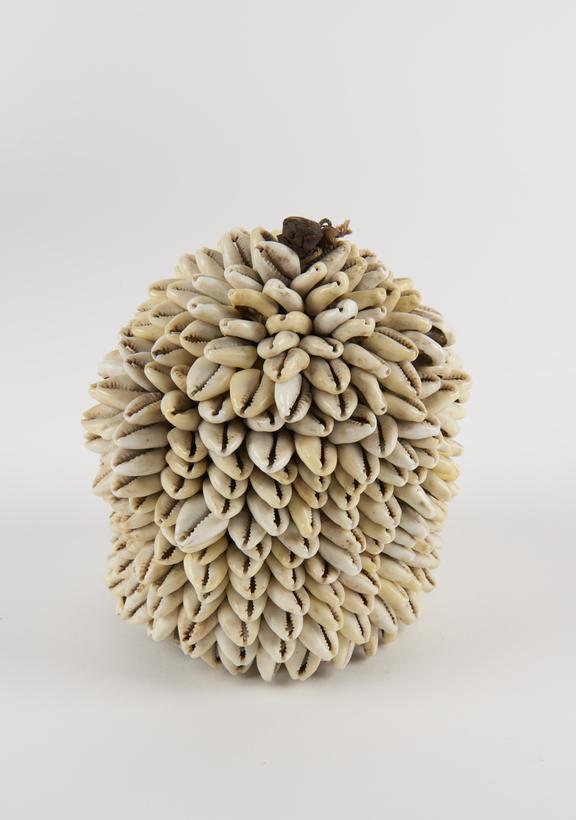

Container, with separated domed lid entirely covered with cowrie shells, associated with cult of the head, part of Shango ritual, Yoruba, Nigerian, from West Africa, 1851-1920
Covered with cowry shells, this container is believed by the Yoruba people of Nigeria to be a visible symbol of one’s spirit double and personal destiny. This is connected to the Yoruba orí cult. The orí or head is considered the most important part of the body. Each person has a destiny that determines social status, wealth and health. It is said that one’s destiny is determined by how well one uses one’s head. The orí cult embraces rituals involving Shango, the Yoruba god of thunder, lightning and the Sun. Rituals are performed by women who wish to appeal to Shango for children. Medicine men use his symbols during rituals to cure sickness.
Details
- Category:
- Ethnography and Folk Medicine
- Collection:
- Sir Henry Wellcome's Museum Collection
- Object Number:
- A220872
- type:
- container
- credit:
- Glendining
